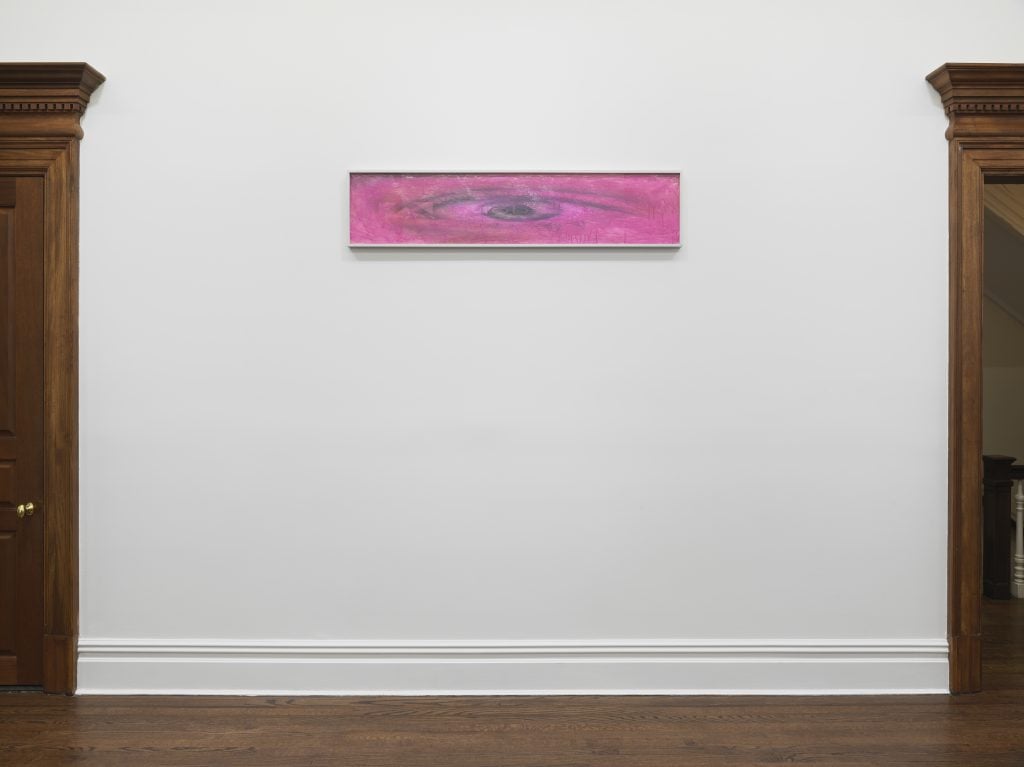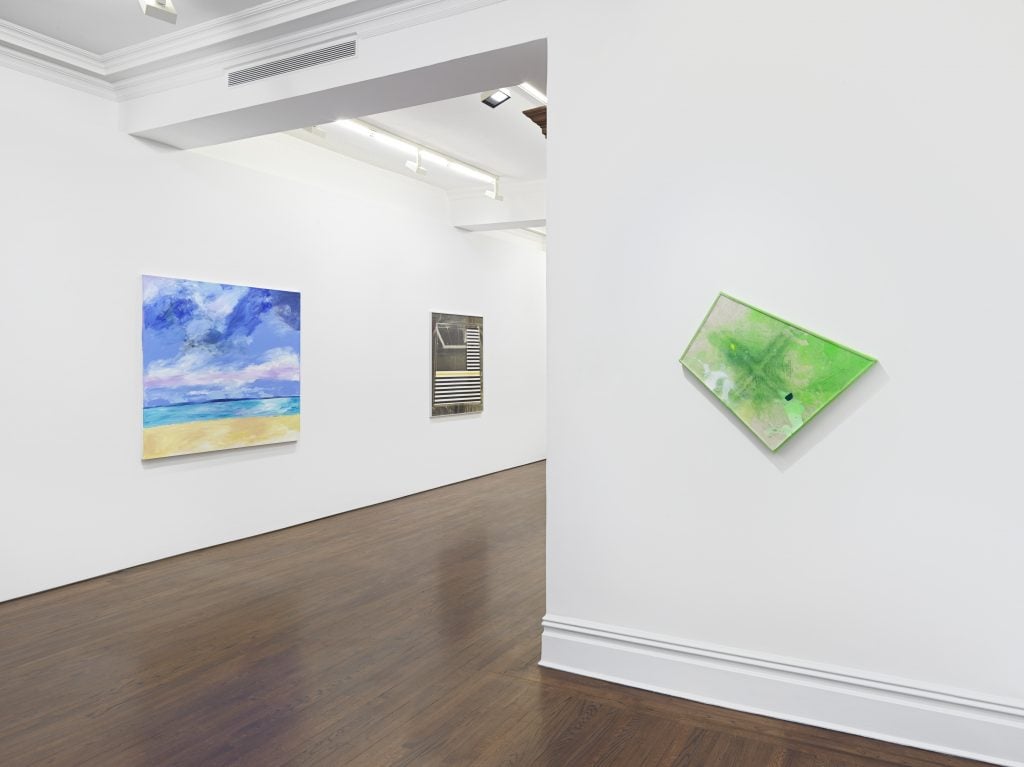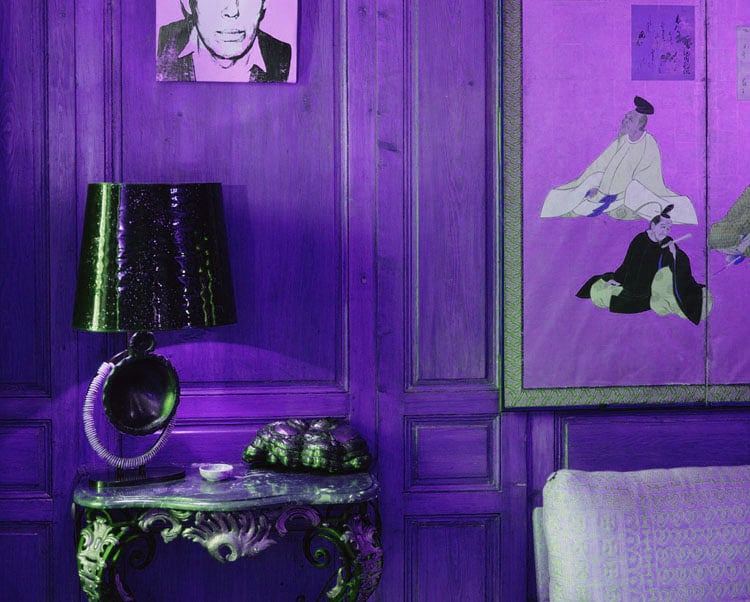The Gray Market
Bye-Bye, Benefit Auctions? Why Major Galleries and Nonprofits Are Taking a New Approach to Charitable Giving
Our columnist unpacks recent efforts to fundraise for good causes without the involvement of auction platforms.

Our columnist unpacks recent efforts to fundraise for good causes without the involvement of auction platforms.

Every week, Artnet News brings you The Gray Market. The column decodes important stories from the previous week—and offers unparalleled insight into the inner workings of the art industry in the process.
This week, re-evaluating the giving tree…
In the 21st-century art business, no fundraising avenue is more prevalent or more widely approved than the charity auction. Whether staged at an in-person event, online, or both, these alliances have helped raise millions of dollars in recent decades for a slew of worthy causes. They have also helped propel some in-demand artists’ auction prices to new heights—sometimes repeatedly over the course of just a few months. What’s not to love?
Apparently, more than you might think. Over the past few years, a growing number of dealers and art nonprofits have begun experimenting with alternatives to the traditional charity auction. While their stated reasons vary, their actions indicate that at least some powerful stakeholders are questioning whether the most popular way to raise money for a good cause is still the best way. Those doubts are increasingly leading in two directions: away from using major auctioneers as middlemen, and toward abandoning the benefit auction in favor of the benefit exhibition.
The most recent example of this trend was still in progress as of my writing. For the past three weeks, international powerhouse Sprüth Magers has devoted its New York location to hosting a group show in which all works are being sold on behalf of the Artadia Awards, a program through which the American nonprofit makes unrestricted grants to at least 21 artists in seven U.S. cities annually.
Titled “Sprüth Magers x Artadia: A Benefit Exhibition to Support the Next Generation of Artists,” the initiative features 12 works from eight members of the gallery’s roster. Participants include everyone from canonical veterans Barbara Kruger and Louise Lawler to fast-rising ultra-contemporary artists Lucy Dodd and Pamela Rosenkranz. The works on offer range in price from $7,500 to $100,000. They are a mixture of new and historical, too, with the most senior piece in the show—a beguiling floor-mounted construction of painted wood by Thea Djordjadze—dating to 2010. (The three Lawler pieces included are a 2019 adaptation of a 1994 work.)
Like most major galleries, Sprüth Magers and its artists have previously donated works to various charity auctions. But this international, cross-generational project is the gallery’s first benefit exhibition. The appeal was immediate, according to the gallery’s stakeholders.
“An exhibition has the opportunity to have many layers for success, whereas an auction has only one metric: sales,” said Philomene Magers by email. “Helping to fund Artadia’s mission is important and within the exhibition setting all the artworks have been curated, so the result is a corresponding group show and not stand-alone pieces.”
“We can also start conversations that can last longer than the duration of the show and bear more fruit than a simple transaction,” added Monika Sprüth. “It goes back to supporting a community. This model allows for ideas and relationships to develop.”
The format’s multidimensionality didn’t diminish the generosity of anyone involved, however. Although Artadia never requested a specific percentage of sales proceeds, Sprüth Magers pledged its entire share and gave each participating artist the autonomy to donate as much or as little of their cut as they chose. Five of the 12 works in the show had been placed by publication time, with 100 percent of sales proceeds from those transactions going to Artadia.

Installation view of “Sprüth Magers x Artadia: An Exhibition to Benefit the Next Generation of Artists,” at Sprüth Magers New York, April 4–22, 2023. Pictured (L to R): Karen Kilimnik, the beach and the sea (2022); Rosemarie Trockel, Pattern is a Teacher (2019); and Lucy Dodd, Shield 6 (2015). Photo: Genevieve Hanson, courtesy of Sprüth Magers.
What about the art, though? It’s unlikely that the presentation would have been as cohesive or as high-caliber if it had been staged in any other way but this one. The exhibition was organized just as the gallery would organize any of its typical group exhibitions, including collaborating with the artists on artwork selection and installation. A brushy seascape canvas by painter’s painter Karen Kilimnik and two pattern-based works by celebrated conceptualist Rosemarie Trockel have never been shown before. Rosenkranz’s I Wish I Could Cry Blood (Stare Circle) (2021) doubles as a table-setter for her thematically related High Line commission, which debuts this month.
“It is a show that we are proud of, regardless of the philanthropic nature of it. That was important to us from the outset,” said Sprüth.
Still, being able to offer artists the comfort and collaboration of a gallery exhibition was only one of the advantages of this alternative benefit model. A deep-dive comparison against the benefit auction reveals additional reasons that the benefit exhibition is attracting more and more attention in an art business increasingly focused on the long term.
Although the transactional frenzy of live charity auctions can mean that a work raises more money for a good cause than it might in a calmer environment, the format can also mean that works go to buyers whose interest in long-term stewardship fades alongside the one-night-only aphrodisiac of competition. If so, it raises the likelihood that pieces prized on one special evening could be left to languish in the new owners’ storage for the long run—or worse, flipped at the first profitable opportunity.
Carolyn Ramo, Artadia’s executive director, echoed this sentiment in an interview. She estimated that she and her colleagues had spent at least the past four years pursuing a fundraising model more organic to their perspective than gavel-directed giving. In comparison to charity auctions, Ramo described the benefit exhibition as “a little slower, more thoughtful,” and thus more in line with how nonprofits like Artadia typically try to build support for their missions. After all, repeat donors are just as vital to the long-term health of charitable organizations as repeat collectors are to the long-term health of artists’ and dealers’ careers.
The benefit exhibition also positions each of the parties involved to do only the work they excel at doing, within parameters they already know well, Ramo noted.
“Artadia is a grant-making organization uniquely focused within the market on under-recognized artists,” she said. “We understand galleries. When we were doing benefit auctions, it just didn’t feel right. All of a sudden, we’re a nonprofit in charge of placing works. That’s not really our strength.”
Don’t auction houses and auction platforms know a thing or two about lining up bidders, though? They do, but often for a price. Even when selling works to benefit a nonprofit, auctioneers don’t always waive the buyer’s premium or other fees that they charge when the lots on the block are strictly for profit. Passing often-sizable added costs onto potential donors doesn’t necessarily sit well with every charitable organization. The impersonality of e-commerce and the longer duration of online auctions (which typically last at least a week) also make them less likely to drum up real fervor among an exclusively remote pool of bidders.

Louise Lawler, Three Sizes in Twelve Colors (M) (1994/2019). Courtesy of the artist and Sprüth Magers.
A benefit exhibition has the power to eliminate these problems, especially if the gallery behind it represents the entire cast of participating artists. In this particular case, the cornerstone of Artadia’s thinking was evident in a rhetorical question Manuela Mozo, Artadia’s deputy director, asked me: “Why not work with the intermediaries who know the artists and their collectors best?”
The logic is tough to dismiss. Entrusting sales to a respected dealer doesn’t just radically improve the odds that an artist’s charitable contribution will go to a buyer genuinely emotionally invested in the work. It also ensures that both the studio and the gallery can keep a better handle on each piece’s whereabouts after the sale—crucial knowledge when it comes time to request loans for institutional shows or to assemble a catalogue raisonné. To me, asking artists to sacrifice time, labor, and money for a good cause is one thing, but it’s neither fair nor wise to ask them to also risk severing their connection to their work and its wellbeing in the process.
These ideas shouldn’t exactly hit with the shock of a water balloon thrown from a funeral procession. True, a small subset of artists and their galleries have managed to strategically leverage auctions, including charity auctions, to their mutual advantage over the past several years. But most of their peers still rue the pressure and risks of an extreme auction result of any kind, regardless of whether the auction is taking place live or online.
In either case, a poor public performance tends to convince observers that an artist’s career is in decline, even if that artist’s closely guarded private-market results would tell a very different story. A bidding war, meanwhile, can force uncomfortably high expectations onto an artist, partly by compelling other owners of their work to try to capitalize on the perceived boom by over-saturating the market with consignments.
All of which raises the question: Why on earth have we collectively decided that the sales format responsible for inducing the most anxiety among artists and dealers should be the art world’s primary fundraising avenue for nonprofit causes?

Avery Singer, Happening (2022), which sold for $1.4 million in Hauser & Wirth’s auction benefiting UNHCR. © Avery Singer. Photo: Lance Brewer, courtesy the artist and Hauser & Wirth.
Sprüth Magers isn’t the only high-end gallery detouring from the charity auction superhighway. In October 2020, Hauser and Wirth staged “Artists for New York,” a hybrid exhibition where net sales proceeds were divided between 16 nonprofits, most of which were New York City art institutions hit hard by the Covid shutdowns. While the full complement of works by more than 100 artists was viewable online for three weeks, several of the pieces were also displayed at the gallery’s two New York locations for nearly as long.
Hauser and Wirth donated all fees and commissions from the exhibition, ensuring that at least half of each sale price (less “nominal fundraising expenses”) went to the nonprofits. As in the Sprüth Magers x Artadia partnership, participating artists could choose to donate all or part of their cut, as well. All told, the exhibition raised $8.2 million for the beneficiary organizations.
“Artists for New York” was a production of Art for Better, Hauser and Wirth’s ongoing series of charitable initiatives. More recently, the project raised almost $4.6 million for the United Nations Refugee Agency, through an online benefit auction facilitated entirely in house. Hauser and Wirth president Marc Payot told my colleague Eileen Kinsella that the event marked the first time a commercial gallery had ever put together an auction without the help of an auction house. But while Payot labeled it “very risky” to go this route, doing so allowed the gallery to nix the buyer’s premium and other fees so that the charity would receive 100 percent of sales proceeds from the 12 works donated by Avery Singer, Rashid Johnson, and several of the gallery’s other top talents.
When the auction was first announced, Iwan Wirth told Kinsella via email that his gallery was “not competing with the auction houses. Period.” At the same time, he continued, “Our mandate here is to achieve the best result for the works our artists have so generously donated for this fundraiser. And we do not expect to become an auction business nor to change our core business model.”
There’s a bit of a paradox in Wirth’s statements. I fully believe that Hauser and Wirth has no intention of converting itself into an auction house full-time. In that sense, the mega-gallery really isn’t competing with Christie’s, Sotheby’s, or the rest of the gavel gang on their day-to-day business. And yet, by publicizing his conclusion that his gallery could “achieve the best results” with a charity auction, he also necessarily implied that everyone else—including the auction houses—would do worse, which is an inherently competitive judgment.
I’m sure that more than one auction professional thinks they could have wrung more than $4.6 million out of the 12 works in Hauser’s U.N. charity auction. But based on my conversations around the Sprüth Magers x Artadia show, it’s also possible that there’s more to Hauser and Wirth’s concept of achieving “the best results” for the works donated by its artists than just convincing someone to, in the words of Logan Roy, say the biggest number. If so, Wirth’s sentiment becomes much harder to contest.
The ultimate question about these alternatives to traditionally structured charity auctions is how much traction they’ll ultimately get among other dealers, artists, and charitable organizations.
When asked whether her gallery would consider staging another benefit exhibition based on the experience with Artadia—and whether she would encourage more dealers to consider the model, too—Philomene Magers said, “Yes, particularly when the missions of the gallery and organization are in such harmony.”
There is a groundwell of interest in experimentation within the nonprofit sphere as well, according to Ramo. “A lot of other organizations have reached out to us to find out how to do this,” she said. The healthy level of intrigue suggests that many art nonprofits have more questions about typical benefit auctions than a casual observer might expect after the millions of dollars raised under the hammer in recent decades (to say nothing of the millions more that are sure to follow in the decades ahead).
That doesn’t make the standard fundraising structure evil, or even necessarily so flawed that it should be avoided. But it does imply that galleries and nonprofits focused on long-term sustainability have their eyes, ears, and minds open wider to experimentation on this front than ever before. No matter which charitable causes you favor, it would benefit no one if this golden opportunity to innovate evaporates after only a few attempts.
That’s all for this week. ‘Til next time, remember: if you never try, you’ll never know.